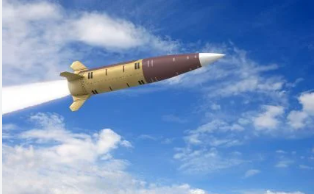Record-Breaking US Arms Sales in 2024 Fueled by Ukraine Conflict
The United States has witnessed an unprecedented surge in arms sales in 2024, primarily driven by heightened global conflicts and increased demand from Ukraine. The ongoing war between Ukraine and Russia has significantly boosted the US defense industry, with various nations seeking advanced weaponry to strengthen their military capabilities. This article explores the key factors behind the record-breaking arms sales, their implications, and the future outlook for the global arms trade.
Surge in Global Demand for US Weapons
One of the main reasons behind the record arms sales is the growing demand for advanced weaponry worldwide. With geopolitical tensions rising, countries are seeking to modernize their defense systems. The war in Ukraine has prompted NATO allies and other nations to ramp up their military capabilities, leading to a sharp increase in orders for US-made weapons, including missiles, drones, and air defense systems.
Additionally, several countries in Asia and the Middle East have also increased their defense spending due to regional conflicts. Nations such as Taiwan, South Korea, and Saudi Arabia have placed significant orders for US military equipment to counter potential threats from adversaries like China and Iran. The US defense industry has capitalized on this trend, securing lucrative deals with allied nations.
Ukraine’s Heavy Reliance on US Military Aid
Ukraine has been one of the biggest recipients of US military aid since Russia’s invasion in 2022. In 2024, the US continued to supply billions of dollars worth of advanced weaponry, including tanks, precision-guided missiles, and long-range artillery systems. These arms have played a crucial role in Ukraine’s defense strategy, helping them push back Russian forces in key battle zones.
The Biden administration has repeatedly emphasized its commitment to supporting Ukraine’s sovereignty and territorial integrity. This support has translated into extensive arms shipments, further fueling the US defense industry’s growth. Additionally, other NATO countries have followed suit, contributing to a surge in demand for American-made weapons across Europe.
Boom in US Defense Industry Profits
The surge in arms sales has led to record-breaking profits for major US defense contractors such as Lockheed Martin, Raytheon, and Northrop Grumman. These companies have reported significant revenue increases due to large-scale orders from both the US government and international allies.
The Pentagon has also ramped up production of high-tech weaponry to meet growing demand. Advanced fighter jets, missile defense systems, and unmanned aerial vehicles (UAVs) have been among the most sought-after military assets. The continued increase in defense spending has created thousands of new jobs in the industry, further strengthening the US economy.
Geopolitical Consequences of Increased Arms Sales
While the record arms sales have benefited the US economy, they have also raised concerns about escalating global conflicts. Increased militarization could potentially heighten tensions between rival nations, leading to a more unstable geopolitical environment. For instance, Russia has warned that continued Western arms shipments to Ukraine could lead to severe retaliatory actions.
Similarly, China has expressed concerns over US arms sales to Taiwan, viewing them as a direct threat to its sovereignty. The increase in military aid to Asian allies has further strained US-China relations, adding to the risk of future conflicts in the Indo-Pacific region. The growing arms race among global superpowers could lead to unforeseen consequences, making diplomacy more challenging.
US Foreign Policy and Arms Trade Regulations
The surge in arms sales has also sparked debates over US foreign policy and arms trade regulations. Critics argue that excessive arms exports may contribute to prolonged conflicts and human rights violations. While the US government has strict regulations on arms sales, concerns remain about weapons falling into the wrong hands.
Congress has been actively involved in overseeing arms deals, ensuring that they align with US national security interests. However, with increasing demand for weapons, some lawmakers have called for tighter controls on military exports, particularly to regions experiencing political instability. Striking a balance between supporting allies and preventing arms proliferation remains a key challenge for US policymakers.
Future Outlook for US Arms Sales
The global demand for US weapons is expected to remain strong in the coming years, driven by ongoing conflicts and shifting security dynamics. The war in Ukraine continues to be a major factor influencing arms sales, with NATO countries reinforcing their military capabilities.
At the same time, rising tensions in the Indo-Pacific region suggest that US arms sales to Asian allies will continue to grow. The US defense industry is likely to expand production to meet the needs of both domestic and international clients, further solidifying America’s position as the world’s leading arms supplier.
However, geopolitical uncertainties and diplomatic efforts to de-escalate conflicts could impact future sales. The US government will need to carefully navigate international relations while ensuring that its arms trade policies align with national security objectives.
Conclusion
The record-breaking US arms sales in 2024 highlight the growing demand for military equipment amid global conflicts. While this surge has boosted the American defense industry and economy, it also raises important geopolitical and ethical considerations. As tensions continue to rise worldwide, the future of US arms sales will depend on evolving security needs, foreign policy decisions, and global diplomatic efforts.


Leave a Comment